As I look out my window, I see a dragonfly’s shimmering wings. They dance in the breeze, reminding me of their beauty. Dragonflies have been around for over 300 million years. They’ve inspired many, including Albrecht Dürer and the art nouveau movement.
Today, I’m excited to teach you how to draw these pretty dragonfly drawings. We’ll bring their detailed beauty and bright colors to life on paper.
Whether you’re an experienced artist or just starting, this guide will help you. You’ll learn to create a beautiful dragonfly sketch. We’ll cover basic shapes and add realistic details.
We’ll use pencils, markers, and colored pencils to create our insect illustrations. So, let’s start our journey to master the art of dragonfly drawing.
Get ready to be inspired and let your creativity shine. Together, we’ll explore the world of dragonflies, one stroke at a time.
Mastering the Basics: Drawing a Dragonfly’s Body
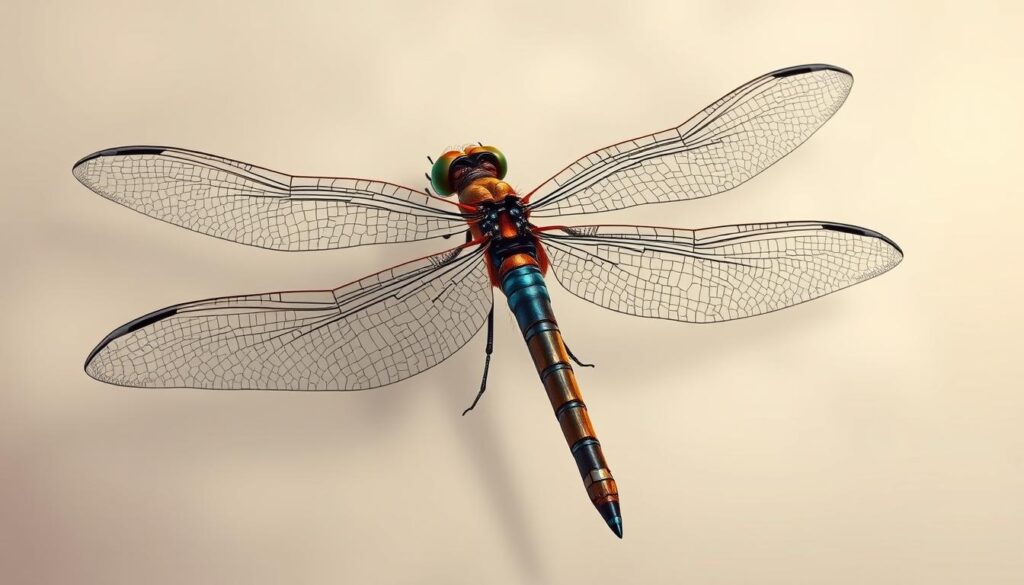
Creating a captivating dragonfly drawing starts with understanding its anatomy. The dragonfly’s body is made of a segmented thorax, a slender abdomen, and detailed wings. Let’s start by sketching the basic parts of the dragonfly’s body.
Begin with the thorax, the strong middle part of the dragonfly. This area has muscles that help it fly. Sketch the thorax’s rounded, elongated shape with light, confident strokes. Focus on the anatomy and winged structure for a realistic and striking drawing.
Then, sketch the abdomen, the long, segmented part behind the thorax. Observe its unique shape and proportions. Use your sketching techniques to draw it accurately. Keep the dragonfly body structure in mind for a balanced drawing.
Mastering the basic shapes of the dragonfly’s body is key. It sets the stage for adding detailed features. Focus on the insect anatomy and winged structure to create a stunning dragonfly drawing.
Bringing Your Dragonfly to Life with Intricate Details
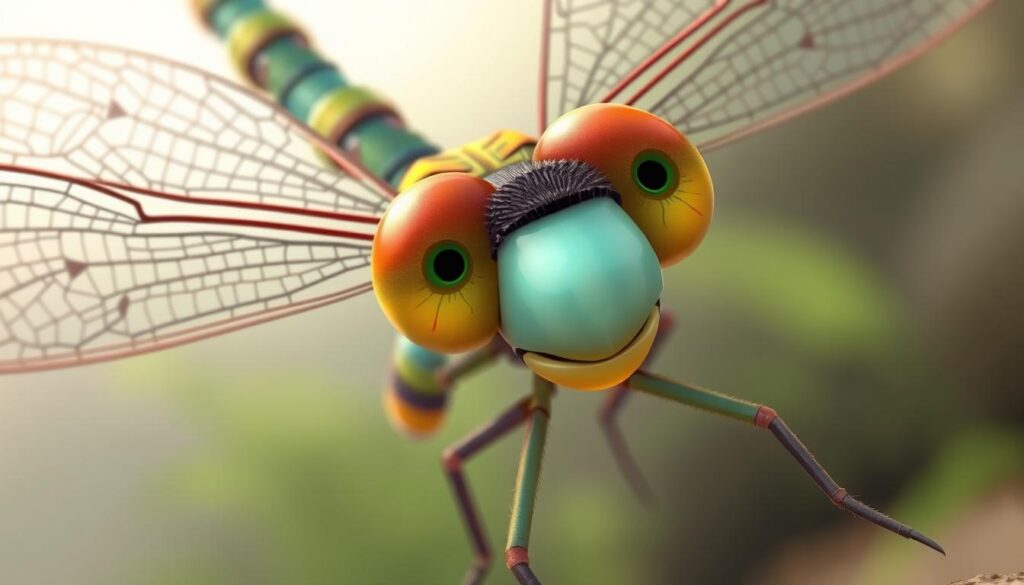
Creating a stunning dragonfly drawing is more than just basic shapes and patterns. It’s about adding the fine details that make these insects so eye-catching. From the delicate head to the mesmerizing wings, understanding dragonfly anatomy is key. This will help you create a piece that truly captures their essence.
Begin with the dragonfly’s head, home to its large, compound eyes. These eyes have thousands of visual units, giving them almost 360-degree vision. Sketch the eyes carefully, making sure they fit the insect’s size and shape. Also, include the short but important antennae, which help with their senses.
The abdomen is another detail-rich area. Dragonflies have a long, slender abdomen with unique patterns or colors. Pay close attention to the segmentation and any special features that make your dragonfly unique.
Lastly, the wings are essential. These transparent, membranous wings have a network of veins, creating a beautiful, lace-like effect. Take your time to draw the wing shapes, vein distribution, and any shading or color. Your dragonfly drawing will then truly come to life.
Adding Realistic Touches to Your pretty dragonfly drawing
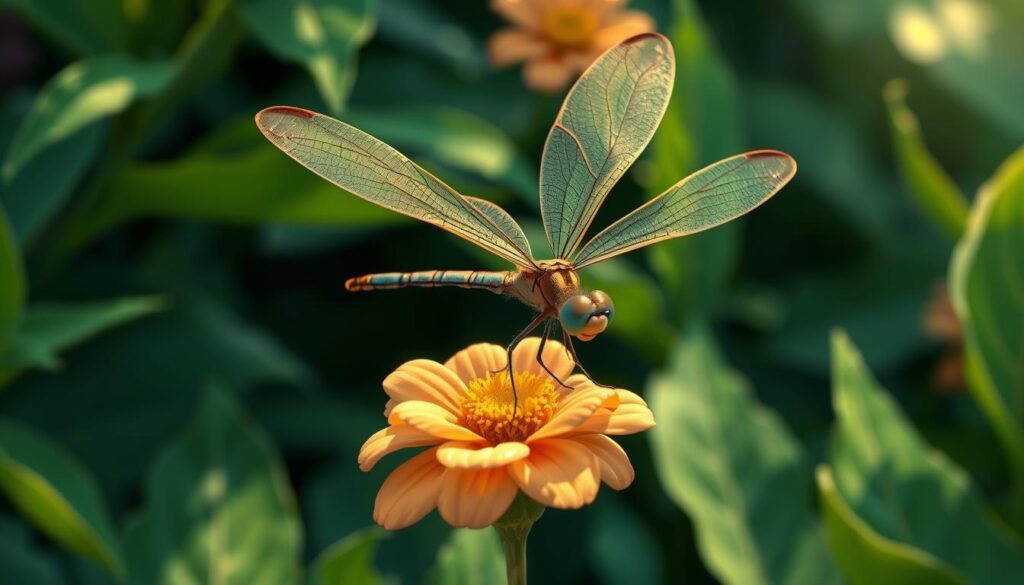
To make a stunning dragonfly drawing, you need more than just the basic shape. You must focus on the small details that make these insects so fascinating. Adding realistic touches can turn your drawing into a true piece of nature’s art.
The dragonfly’s legs are key to its beauty. These long, curved legs end in tiny claws. Drawing them accurately adds depth and realism to your work.
The wings of a dragonfly are also vital. They have a network of veins that make them look elegant and complex. By adding these veins and subtle shading, you can show the dragonfly’s flight in a new way.
Lastly, the dragonfly’s eyes are very important. They show the insect’s personality and grab the viewer’s attention. Paying attention to the eyes’ details and shading can make your drawing even more realistic and touching.
By focusing on these realistic details, you can create a dragonfly drawing that truly captures their beauty. With patience and practice, you can make your art come alive and inspire others.
Capturing Nature’s Beauty: The Magical Dragonfly
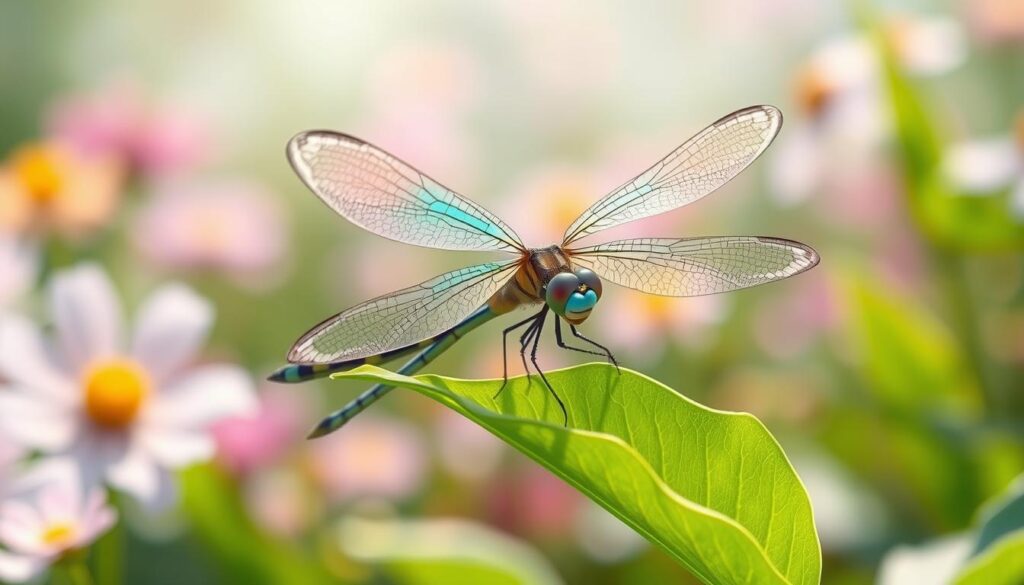
Dragonflies have inspired many for centuries. These insects, around for 300 million years, are a symbol of natural beauty. Their iridescent wings and delicate features make them a wonder of the natural world.
The Art Nouveau period, from 1890 to 1910, saw a surge in dragonfly-inspired art. Their designs and colors were used in jewelry and furniture. This showed the dragonfly’s lasting appeal as a nature symbol.
Today, artists love to draw dragonflies. With over 7,000 species worldwide, each has its own story. From giant fossils to small, beautiful ones, dragonflies inspire us all.
Unleashing Your Artistic Potential with Vibrant Colors
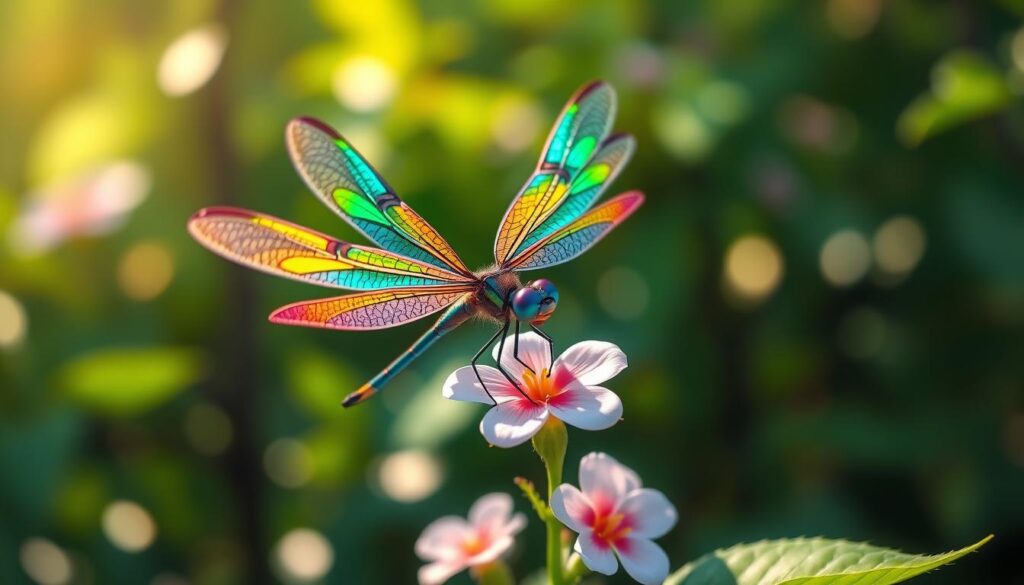
Make your dragonfly drawing pop with vibrant colors! This journey will let you unleash your creativity. You’ll turn your sketch into a stunning work of art. Colored pencils are perfect for capturing a dragonfly’s magical wings and body.
Try a nature-inspired palette for your dragonfly. Mix colors that remind you of nature. Use rich greens and shimmering blues to bring your dragonfly to life. Colored pencils can create detailed patterns and textures, just like a real dragonfly.
Let your imagination run wild with vibrant colors. Explore the world of colored pencil art and discover new ways to express yourself. As you draw, watch your dragonfly come to life in a beautiful, nature-inspired way.
Mastering the Art of Dragonfly Drawing: A Step-by-Step Guide
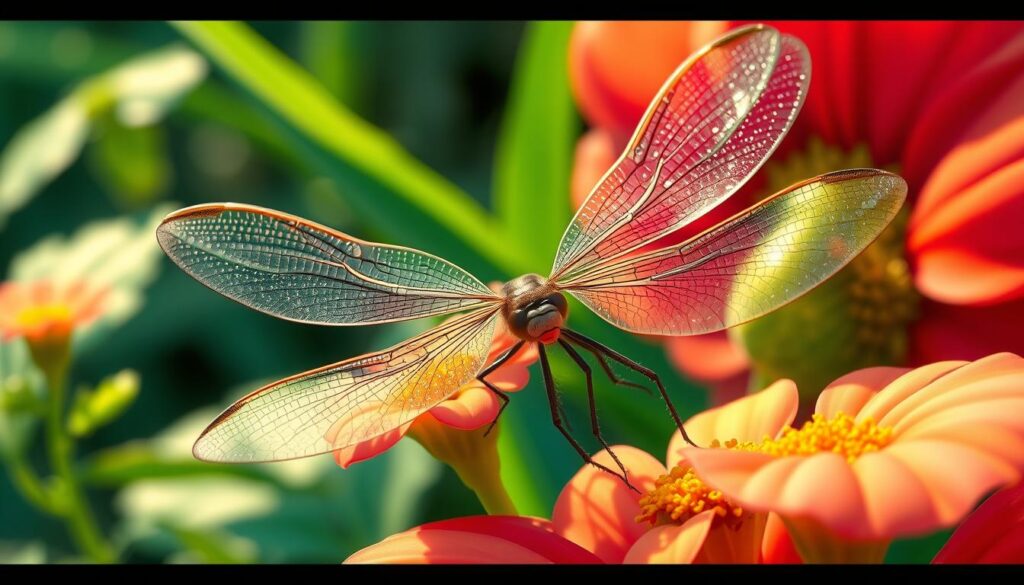
Unlock your artistic skills and learn to draw stunning dragonflies with this detailed guide. It’s perfect for both newbies and seasoned artists. You’ll get the tools and techniques to master dragonfly drawing and bring these amazing insects to life.
First, get to know a dragonfly’s basic body shape. Notice the fine details like the wings and patterns on the belly. Sketch the main shape, focusing on the curves and angles that make them special.
Next, add the details that make your dragonfly come alive. Try different techniques like shading and stippling to add depth. Use colors and patterns to capture their beauty, with tools like colored pencils or watercolors.
Remember to be creative and try new things. Dragonfly drawing offers endless ways to express yourself. With time and effort, you’ll make beautiful, nature-inspired art that shows off your style.
So, pick up your art supplies and let the natural world inspire you. Start your artistic journey with this guide to dragonfly drawing. Let your creativity fly and make art that captures the beauty of these incredible insects.
Unraveling the Secrets of Dragonfly Wings
Artists find endless inspiration in nature. The dragonfly’s wings are a perfect example. These wings are not just for flying; they show the beauty of nature.
The dragonfly’s wing is a masterpiece of engineering. It has a complex system of veins and membranes. This system helps the dragonfly fly smoothly and easily. By learning about these wings, we can make our art more real and deep.
Every part of the dragonfly’s wing is fascinating. The patterns and the way they shine in the light are amazing. By studying these wings closely, we can make our art more realistic and beautiful.
Exploring the dragonfly wing can be exciting for any artist. It helps us improve our skills and create art that truly shows the beauty of these creatures.
Delicate Lines and Intricate Details: The Essence of Dragonfly Art
As an artist, I’ve always been drawn to dragonflies. Their beauty and detail inspire my nature-inspired illustrations. To draw a dragonfly, you need to observe closely and have a skilled hand.
The lines on a dragonfly’s wings and body are key. Each vein and curve must be carefully drawn for a realistic look. The way light and shadow play on its wings adds to its magical quality.
But it’s not just the lines that make a dragonfly drawing special. The patterns on its wings, its eyes, and body details all add up. Together, they create a piece of dragonfly art that grabs your attention. It’s a mix of precision and creativity, where every stroke matters.
Exploring nature-inspired illustration, I keep coming back to dragonflies. Their delicate lines and details speak to me. I’m always trying to capture that magic in my art.
Bringing Your Winged Creature to Life with Colored Pencils
Exploring your artistic side can be exciting, and dragonflies are a great subject. They have vibrant colors that can inspire your art. We’ll look at how colored pencils can make your dragonfly come alive, adding depth and movement.
Whether you’re new to art or have experience, using colored pencils can be rewarding. Layering and blending colors to show a dragonfly’s wings is a challenge. But, with practice, you can turn a simple drawing into a beautiful piece of art.
A book with unique insect pictures is coming out in April/May 2019. It will have at least 30 designs. You can download a ‘Dragonflies’ coloring page as a PDF on Etsy. This design has been shared 148 times, showing its appeal to art lovers everywhere.
Start your colored pencil dragonfly drawing with an open mind. Try different pencils like Tombow Irojiten, Prismacolor, and Derwent Inktense. They offer unique textures and colors. With patience and practice, you’ll create a stunning piece of nature-inspired art.
The Fascinating World of Dragonflies: Nature’s Inspiration
Dragonflies have long fascinated artists, illustrators, and nature lovers. Their delicate wings and vibrant colors inspire many. For centuries, they have been a source of beauty and grace in art.
Dragonflies are more than just pretty to look at. They symbolize change, new beginnings, and the fleeting nature of life. In ancient Japanese art and today’s illustrations, they show up in many ways. Each piece reflects the artist’s unique view and creativity.
Exploring dragonfly art, I see a wide range of creativity. From soft watercolors to detailed ink drawings and zentangle designs, they inspire many. The dragonfly clipart bundle offers 5 high-quality JPG files. It shows how these insects continue to inspire artists today.
